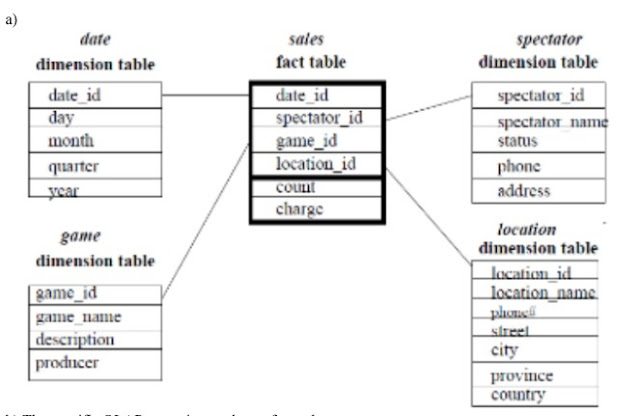Describe Virtual LAN and Virtual SAN along with benefits. Explain how VLAN works.
VIRTUAL LAN (VLAN)
- A virtual local area network (VLAN) is a logical set of workstations, servers, and network devices that seem to be on the same local area network (LAN) despite their geographical separation. A VLAN enables a network of computers and users to connect in a simulated environment as if they were part of a single LAN with a single broadcast and multicast domain. VLANs are used to accomplish scalability, security, and network administration ease, and they can swiftly adapt to changes in network needs and the migration of workstations and server nodes. Higher-end switches provide VLAN functionality and implementation. The goal of creating a VLAN is to increase network speed or to add necessary security measures.
- Local Area Networks (LANs) and Wide Area Networks (WANs) are two types of computer networks (WANs). LANs are network equipment such as switches, hubs, bridges, workstations, and servers that are linked to each other in the same network at a given place. A LAN is often referred to as a broadcast domain. A VLAN enables many networks to function as though they are part of the same LAN. One of the most advantageous aspects of a VLAN is that it eliminates network latency, which saves network resources and improves network efficiency. Furthermore, VLANs are designed to enable segmentation and aid with concerns such as security, network administration, and scalability. VLANs can also be used to simply regulate traffic flows.
The key benefits of implementing VLANs include:
- allowing network administrators to add additional security to network communication.
- making network or network device expansion and relocation easier.
- providing flexibility because administrators can configure in a centralized environment while the devices may be located in different geographical locations.
- Reduce latency and traffic strain on the network and network devices, resulting in improved performance
VLANs also have some disadvantages as listed below:
- There is a high danger of virus problems since a single infected machine can transmit a virus over the entire logical network.
- Because extra routers may be required to regulate the workload in very large networks, there may be equipment limits.
- More successful than a WAN at managing latency, but less efficient than a LAN.
VIRTUAL SAN (VSAN)
A logical partition in a physical storage area network (SAN) is referred to as a virtual storage area network (VSAN). This storage virtualization implementation model splits and assigns parts or all of a storage area network into one or more logical SANS for usage by internal or external IT services and solutions. A virtual storage area network is most commonly used in cloud computing and virtualization contexts. Through storage virtualization, a VSAN enables end-users and enterprises to construct a logical storage area network on top of a physical SAN. The virtualized SAN may be used to create a virtual storage pool for numerous services; however, it is often configured to work with virtual machines and virtual servers.
A VSAN provides identical services and functionality as a traditional SAN, but because it is virtualized, it enables the addition and relocation of subscribers without changing the actual topology of the network. It also has a variable storage capacity that may be raised or lowered over time. VSANS enable traffic to be isolated inside specified areas of a storage area network, allowing a problem in one logical partition to be handled with little disturbance to the rest of the network. The usage of numerous, separated VSANs can also make it easier to set up and scale out a storage system. Subscribers can be added or moved without altering the physical layout.
How VLANs work
- A VLAN is identified on network switches by a VLAN ID. Each port on a switch can have one or more VLAN IDs assigned to it and will land in a default VLAN if no other one is assigned. Each VLAN provides data-link access to all hosts connected to switch ports configured with its VLAN ID.
- A VLAN ID is translated to a VLAN tag, a 12-bit field in the header data of every Ethernet frame sent to that VLAN. Because a tag is 12 bits long, up to 4,096 VLANs can be defined per switching domain. VLAN tagging is defined by IEEE in the 802.1Q standard.
- When an Ethernet frame is received from an attached host, it has no VLAN tag. The switch adds the VLAN tag. In a static VLAN, the switch inserts the tag associated with the ingress port's VLAN ID. In a dynamic VLAN, it inserts the tag associated with that device's ID or the type of traffic it generates.
- Switches forward tagged frames toward their destination media access control address, forwarding only to ports with which the VLAN is associated. Broadcast, unknown unicast and multicast traffic is forwarded to all ports in the VLAN. Trunk links between switches know which VLANs span the switches, accepting and passing along all traffic for any VLAN in use on both sides of the trunk. When a frame reaches its destination switch port, the VLAN tag is removed before the frame is transmitted to the destination device.
- Spanning Tree Protocol (STP) is used to create loop-free topology among the switches in each Layer 2 domain. A per-VLAN STP instance can be used, which enables different Layer 2 topologies. A multi-instance STP can also be used to reduce STP overhead if the topology is the same among multiple VLANs.





Comments
Post a Comment